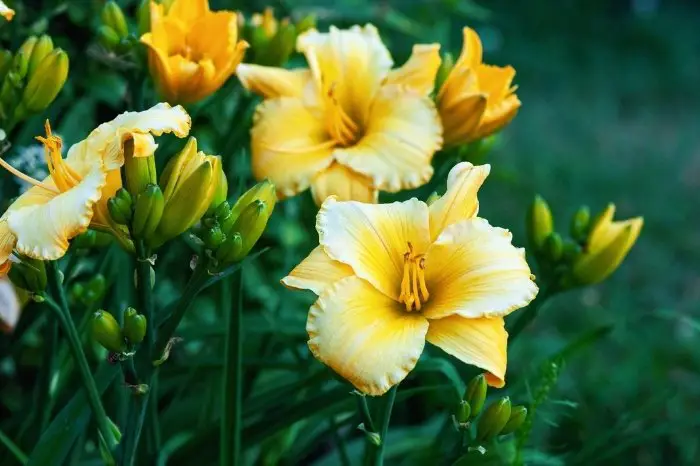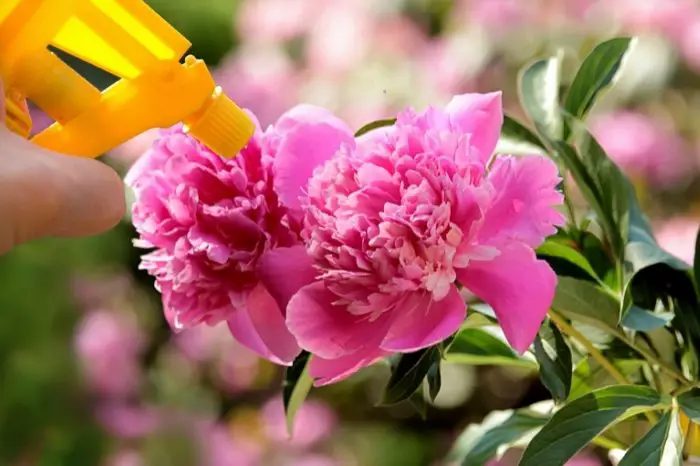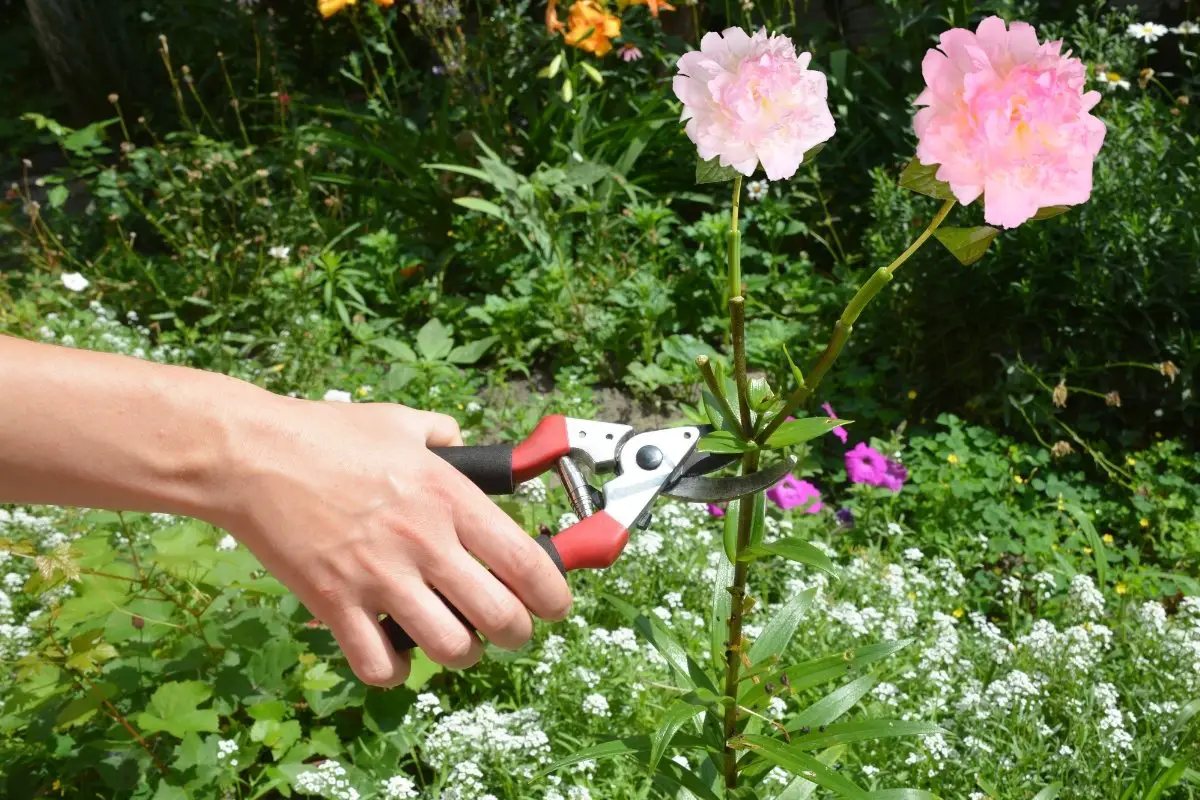Last Updated on January 17, 2022 by Cristina
Everyone knows that peonies generally require very little care, but you might be wondering “Should I deadhead peonies?” This process, despite being very common with other plants, might not be necessary with a peony.
In today’s article, we’ll be taking a very close look at these plants to learn whether you should deadhead them and how to take care of them in general.
Should I Deadhead Peonies?
Deadheading is a crucial process with most plants, and the same goes for deadheading peonies. This doesn’t mean, however, that anything terrible is going to happen if you don’t deadhead them. These plants, as we’ll learn later, are incredibly hardy – they won’t succumb to an illness or pest easily!
To deadhead, a plant means to get rid of the foliage once it starts to wilt. The most important cause for this process lies in the many illnesses and pests that may occur once the foliage starts to wilt. Experts suggest that you should deadhead your peonies once you notice the leaves turning brown.
In order to do this, all you need is a good pair of gardening shears. Just cut the leaves at the stem and get rid of them. Gardeners recommend that you don’t use those same leaves for compost as they could easily attract disease and pests.
Read more about What Are The Most Common Weeds In Oregon?
What Happens if You Don’t Deadhead Peonies?
It’s possible that nothing bad happens and it’s also possible that a lot of bad things will happen to your plant. It’s better to be safe than sorry and just deadhead your plant once the foliage turns brown.
Firstly, deadheading your peony will prevent any damage to the leaves of the plant. The leaves are wilting anyway, so deadheading them is more or less like cutting your losses and saving the rest of the plant from potential illnesses.
Secondly, if you deadhead your peony, you’re increasing the chances of the plant looking its best! Because you just cut the leaves off, the plant will focus its energy on the bulbs, instead of trying to revive the leaves. By doing this, you’re essentially prolonging the blooming season of your peony.
Do Peonies Rebloom After Deadheading?
This is possible, but it’s rare. If you cut off the blooms that were wilting away, they most likely won’t grow back. Instead, the plant will focus its energy on flourishing the blooms that are still alive and thriving. Because of this process, the blooms that remain might last for much longer!

Caring for Peonies
Now that you’ve learned how to deadhead peonies, let’s take a look at some basics when it comes to caring for peonies. In general, peonies are very strong plants that usually demand very little care. They can withstand very cold temperatures, and unlike other plants, they actually like the cold as it’s crucial for their development!
Once again, unlike other plants, they don’t like fertilizers and they usually don’t need you to water them. There are only a few requirements you have to fulfill to make sure that you grow a successful peony!
Check Out What Is Considered A Hard Freeze
Planting Depth
This is the first one of those requirements. Something that’s absolutely crucial for peonies is that you choose the right planting depth! If you live in a moderate or a warmer climate, plant your peony only at an inch of depth in the soil. This way, it will get enough cold during the winter to properly grow. If you live in a colder climate, plant it two inches underground level.
Winter is absolutely crucial to peonies as a season! They need at least 40 days of cold temperatures to thrive during the summer, while they can take much more than just 40 days.
Aside from this, you don’t have to worry about them making it through the winter. The peony is one of those rare plant species that actually dislikes being covered with mulch or any other form of insulation. It thrives in the cold.
Van Zyverden Peonies Mixed Colors Set of 3 Roots
While we’re on the topic of planting – it’s best to plant them in late autumn if you live in a warmer climate, and early autumn if you live in a colder climate. The general rule of thumb is ‘six weeks before the first frost’ – this way, they’ll have enough time to prepare for the winter.
Don’t expect that you’ll get many blossoms during their first season as these plants need a while to grow into adults!
Water And Fertilization
The peony usually doesn’t need any watering from you. Obviously, you should water it heavily right after planting, but that’s about it. The only time you should water it through the year is in the spring and the summer if there isn’t any rain. In that case, feel free to water it once a fortnight.
Regarding fertilization, you shouldn’t fertilize this plant. It needs no fertilizer in the soil unless you yourself think that the soil is poor. If that’s the case, add some fertilizer and compost in before you actually plant your peonies. Gardeners don’t recommend that you fertilize these plants at all, unless your soil is particularly bad – in that case, feel free to fertilize lightly once every two years.
Aside from this, there isn’t much that you have to think about when caring for these plants. They’re very sturdy and they usually take good care of themselves. They might need a little bit of help if the blossoms get too heavy, but that doesn’t happen for the first few years.

Conclusion
To sum up, you should definitely deadhead your peonies. These plants need you to cut off the dead foliage. In return, they’ll concentrate on keeping their remaining bloom looking beautiful and healthy. Additionally, you’re lowering the risk of disease and pests! To deadhead a peony, wait for the foliage to start wilting. You’ll notice that the leaves are becoming more brown.
Take a pair of gardening shears and simply cut the leaves at the stem. Don’t use the leaves as compost as they could attract pests. Instead, dispose of them and enjoy your healthy plant!


